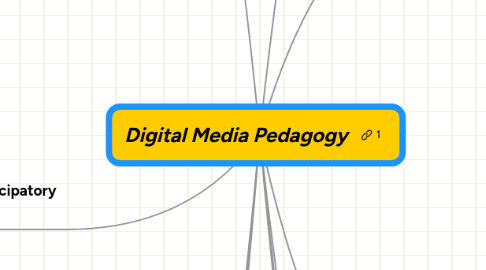
1. Informal Learning/Social Networking Services
1.1. Ning (hard to keep track of large number of users)
1.1.1. http://www.ning.com/
1.2. Open source social networking
1.2.1. http://www.elgg.org
1.2.2. https://n-1.cc/
1.2.3. Install this plug-in with WordPress and create a social networking site
1.2.3.1. http://buddypress.org/
1.3. Facebook (create closed groups for students)
1.3.1. http://www.facebook.com/
2. OPEN LEARNING
2.1. Blogging
2.1.1. Microblogging
2.1.1.1. Free and open source
2.1.1.1.1. http://identi.ca/
2.1.1.2. schedule tweets months ahead
2.1.1.2.1. http://twuffer.com/
2.1.1.3. Twitter (create a hashtag for your class and ask students in large classes to tweet questions during class; project the page for your hashtag)
2.1.1.3.1. http://twitter.com/
2.1.2. Blogging (literary)
2.1.3. Video blogging
2.1.3.1. exchange video messages on Facebook
2.1.4. Tumblr
2.1.4.1. media-rich, twitter-like blogging
2.1.4.2. http://tumblr.com
2.2. http://www.wikipedia.org/
2.3. Online database of more than 200 journals
2.3.1. http://muse.jhu.edu/
2.4. http://www.doaj.org/
2.5. Wikimedia Commons is an online repository of free-use images, sound and other media files.
2.5.1. http://commons.wikimedia.org
2.6. MIT's Open Courseware (access syllabi by MIT faculty for free, e.g., engineering)
2.6.1. http://ocw.mit.edu/OcwWeb/web/home/home/index.htm
2.7. Digital "community of letters"
2.8. What are the realities of open access and open scholarship?
3. Research Tools
3.1. Search 101
3.1.1. http://vivisimo.com/
3.1.2. http://search.yippy.com/
3.1.3. http://search.carrot2.org
3.1.4. http://www.editgrid.com/
3.1.5. http://pubmed.com
3.2. Attention/Focus
3.2.1. Temporarily block access to all social sites on your computer with this app
3.2.1.1. http://anti-social.cc/
3.2.2. Temporarily block the Internet on your computer
3.2.2.1. http://macfreedom.com/
3.3. Annotate websites
3.3.1. http://www.zotero.org/
3.3.2. http://diigo.com
3.4. Social bookmarking
3.4.1. http://www.delicious.com/
3.5. Bibliography
3.5.1. http://www.librarything.com/
3.5.2. http://citeulike.org
3.5.3. http://www.zotero.org
3.6. Archive and reference your academic work
3.6.1. http://www.mendeley.com
4. Live Streaming
4.1. Live stream and archive video of events
4.1.1. http://www.ustream.tv
4.1.2. http://www.livestream.com/
5. Organizational/ Administrative Tools
5.1. General Productivity Tools
5.1.1. Google Docs
5.1.1.1. http://docs.google.com/support/bin/ topic.py?topic=15115
5.1.2. Allows you to easily paste frequently used snippets of text
5.1.2.1. http://smilesoftware.com/TextExpander/
5.1.3. Merge pdfs online
5.1.3.1. http://www.nitropdf.com/free/hammer/ index.htm
5.1.4. Students in large classes formulate questions and then vote which ones should be answered.
5.1.4.1. https://www.google.com/moderator/
5.2. Schedule appointments with students or colleagues
5.2.1. http://www.doodle.com/
5.3. Share large files
5.3.1. http://www.4shared.com/
5.3.2. https://www.dropbox.com/
6. Teaching/Participatory Learning
6.1. Personal Dashboards
6.1.1. http://www.google.com/ig
6.1.2. Aggregate a variety of websites throughout the semester for your students to read, follow, and respond to.
6.1.2.1. http://www.netvibes.com/en
6.2. Collaborative Writing
6.2.1. http://www.mixedink.com/
6.2.2. Students can share and comment on each others' papers. They can also all see your remarks.
6.2.2.1. https://docs.google.com
6.3. Collaborative Concept Mapping
6.3.1. Ask students what they learned in your class. They can write concepts and names on post-it notes and then group it on the blackboard. Finally, a group of students with laptops collaboratively transfers all this to the a collaborative map.
6.3.1.1. http://www.mindmeister.com/
6.3.1.2. http://freemind.sourceforge.net
6.3.1.3. http://dropmind.com/
6.3.1.4. http://www.mindnode.com/
6.4. Content Aggregation
6.4.1. http://www.google.com/reader
6.5. Presentation Tools beyond Keynote and PowerPoint
6.5.1. http://www.scribd.com/
6.5.2. http://omeka.org/
6.5.3. Prezi (requires degree of mastery)
6.5.3.1. http://prezi.com/
6.5.4. http://www.openoffice.org
6.5.5. Upload your slideshows
6.5.5.1. http://slideshare.net/
6.6. Print- On-Demand Publications
6.6.1. Blurb (easiest for beginners, does not allow free pdf version of publication)
6.6.1.1. http://www.blurb.com/
6.6.2. Lulu (does offer free pdf version of publication but does not offer simple design software- better suited for semi-professional use)
6.6.2.1. http://www.lulu.com/
6.7. Create web-based timelines
6.7.1. http://linehive.com/
6.8. Screencasts (record screen interaction, useful for quick walk-throughs of software)
6.8.1. http://www.ambrosiasw.com/utilities/ snapzprox/
6.8.2. http://www.techsmith.com/jing/
6.8.3. http://screenr.com
6.9. Podcasts
6.9.1. Itunes U (listen to lectures from a large number of universities)
6.9.1.1. http://www.apple.com/education/itunes-u/
6.9.2. Profcast: Record slideshows with audio
6.9.2.1. http://www.profcast.com/public/index.php
6.10. Overview + Manuals for Free, Libre, and Open Source Software (FOSS)
6.10.1. Using FOSS is more reliable in the long run because applications are not suddenly shut down for commercial reasons (e.g. Delicious.com, Seesmic.tv)
6.10.1.1. http://en.flossmanuals.net/
6.11. Learning and Mobile Platforms
6.11.1. Using a txting mailing on cellphones with undergraduate students gets far more of their attention
6.11.1.1. texting mailing list
6.11.1.1.1. send text messages from your gmail account
6.11.1.1.2. http://groupme.com/
6.11.1.2. few useful mobile learning apps
6.11.2. The Feebackr http://www.benmoskowitz.com/?p=85
6.12. Teaching with/on YouTube
6.12.1. Use of Flipcams
